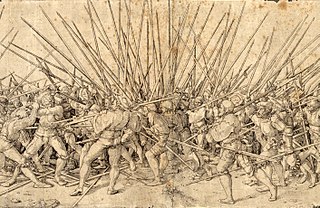Related Research Articles

Mary I, also known as Mary Tudor, and as "Bloody Mary" by her Protestant opponents, was Queen of England and Ireland from July 1553 and Queen of Spain as the wife of King Philip II from January 1556 until her death in 1558. She is best known for her vigorous attempt to reverse the English Reformation, which had begun during the reign of her father, King Henry VIII. Her attempt to restore to the Church the property confiscated in the previous two reigns was largely thwarted by Parliament, but during her five-year reign, Mary had over 280 religious dissenters burned at the stake in the Marian persecutions.

1606 (MDCVI) was a common year starting on Sunday of the Gregorian calendar and a common year starting on Wednesday of the Julian calendar, the 1606th year of the Common Era (CE) and Anno Domini (AD) designations, the 606th year of the 2nd millennium, the 6th year of the 17th century, and the 7th year of the 1600s decade. As of the start of 1606, the Gregorian calendar was 10 days ahead of the Julian calendar, which remained in localized use until 1923.

1610 (MDCX) was a common year starting on Friday of the Gregorian calendar and a common year starting on Monday of the Julian calendar, the 1610th year of the Common Era (CE) and Anno Domini (AD) designations, the 610th year of the 2nd millennium, the 10th year of the 17th century, and the 1st year of the 1610s decade. As of the start of 1610, the Gregorian calendar was 10 days ahead of the Julian calendar, which remained in localized use until 1923.
Year 1478 (MCDLXXVIII) was a common year starting on Thursday of the Julian calendar.

1544 (MDXLIV) was a leap year starting on Tuesday of the Julian calendar, the 1544th year of the Common Era (CE) and Anno Domini (AD) designations, the 544th year of the 2nd millennium, the 44th year of the 16th century, and the 5th year of the 1540s decade. As of the start of 1544, the Gregorian calendar was 10 days ahead of the Julian calendar, which was the dominant calendar of the time.

Robert Catesby was the leader of a group of English Catholics who planned the failed Gunpowder Plot of 1605.

In England and Wales, the Tudor period occurred between 1485 and 1603 and includes the Elizabethan period during the reign of Elizabeth I until 1603. The Tudor period coincides with the dynasty of the House of Tudor in England that began with the reign of Henry VII. Historian John Guy (1988) argued that "England was economically healthier, more expansive, and more optimistic under the Tudors" than at any time since the Roman occupation.
John Larke was an English Catholic priest and martyr, who was executed during the reign of Henry VIII. Larke was a notable personal friend of Thomas More, Lord High Chancellor of England. Larke was beatified in 1886 by Pope Leo XIII.
Events from the 1540s in England.
German Gardiner was a Roman Catholic layman and nephew to Stephen Gardiner who became involved in the Prebendaries' Plot against Thomas Cranmer.

Sir John Puckering was a lawyer and politician who served as Speaker of the House of Commons and Lord Keeper of the Great Seal from 1592 until his death.

James Fenn was an English Catholic priest and martyr who was beatified on 15 December 1929, by Pope Pius XI. James Fenn was the brother of the Catholic priest and writer John Fenn and of Robert Fenn. All three brothers were choristers and scholars.
Robert Singleton, also known as John, was an English Roman Catholic priest, executed on a treason charge. He is considered a Catholic martyr by Antonio Possevino, in his Apparatus Sacer.

Sir Robert Throckmorton, KG, of Coughton Court in Warwickshire, was a Member of Parliament and a distinguished English courtier. His public career was impeded by remaining a Roman Catholic.
The Burning of Edinburgh in 1544 by an English sea-borne army was the first major action of the war of the Rough Wooing. A Scottish army observed the landing on 3 May 1544 but did not engage with the English force. The Provost of Edinburgh was compelled to allow the English to sack Leith and Edinburgh, and the city was burnt on 7 May. However, the Scottish artillery within Edinburgh Castle harassed the English forces, who had neither the time nor the resources to besiege the Castle. The English fleet sailed away loaded with captured goods, and with two ships that had belonged to James V of Scotland.
Thomas Ashby (1874–1931) was a British archaeologist.
William Ashby or Asheby was an English politician and a diplomat sent to Scotland.
Events from the year 1593 in the Kingdom of Scotland.
References
- ↑ Herbermann, Charles, ed. (1913). . Catholic Encyclopedia . New York: Robert Appleton Company.
- ↑ Chronicle of the Grey Friars of London Camden Society Old Series: Volume 53 P 46